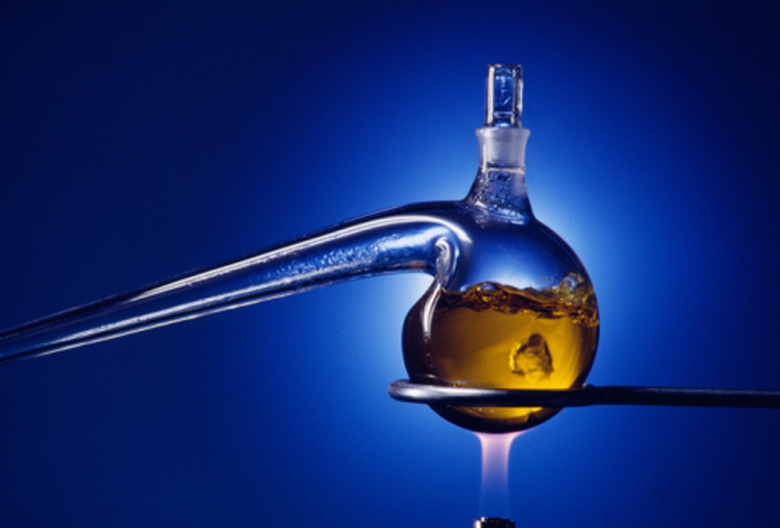Three Characteristics Of The Perfect Flame On A Bunsen Burner
A Bunsen burner uses natural gas to create a steady, hot flame. This piece of equipment is used in laboratories and classrooms when activities and experiments require substances to be heated or melted. The perfect flame provides even, predictable heating and is not easily extinguished by ambient air currents. Attaining the perfect flame requires a proper mix of air and gas.
Undesirable Characteristics of a Flame
Undesirable Characteristics of a Flame
A Bunsen burner flame that is not properly adjusted may interfere with an experiment in a number of ways. A flame that does not contain enough air will not burn all the gas coming out of the burner. This results in a flame that is too cool for most experiments and may produce unsafe levels of gas in the work area. A flame that contains too much air will create an unstable, flickering flame that may go out without warning. In addition to interrupting the experiment, this may also produce unsafe levels of gas.
Color
Color
A perfect flame consists of a narrow plume of pale blue flame. A flame that contains any tint of orange color means that either not enough gas is flowing through the burner or not enough air is being mixed with the gas. An orange flame will not be hot enough for most laboratory purposes. A flame with a bright blue triangle within a pale blue flame is too hot for most experiments, although it may be desirable for specific tasks requiring a great deal of heat.
Steadiness
Steadiness
The flame should be very steady, with no flickering or fluttering. A flame that flickers or flutters may have too much air mixed with the gas and is in danger of going out. The flame should also emerge directly from the nozzle of the burner. If there is a visible space between the nozzle and the bottom of the visible flame, there is too much air in the mixture. A steady flame provides the most uniform level of heat and allows for steady and predictable heating.
Sound
Sound
Once the flame is properly adjusted, there should be very little sound. A flame that hisses or roars either has too much air in the mix or has the gas level turned up too high. The flame should hiss only if you are producing a very hot flame — hotter than desirable for most tasks. The air flow should be reduced until the hissing sound fades. If this causes orange flame to appear, lower the gas flow until the flame returns to a uniform pale blue.
Cite This Article
MLA
Clay, Charles. "Three Characteristics Of The Perfect Flame On A Bunsen Burner" sciencing.com, https://www.sciencing.com/three-perfect-flame-bunsen-burner-8469671/. 24 April 2017.
APA
Clay, Charles. (2017, April 24). Three Characteristics Of The Perfect Flame On A Bunsen Burner. sciencing.com. Retrieved from https://www.sciencing.com/three-perfect-flame-bunsen-burner-8469671/
Chicago
Clay, Charles. Three Characteristics Of The Perfect Flame On A Bunsen Burner last modified March 24, 2022. https://www.sciencing.com/three-perfect-flame-bunsen-burner-8469671/
